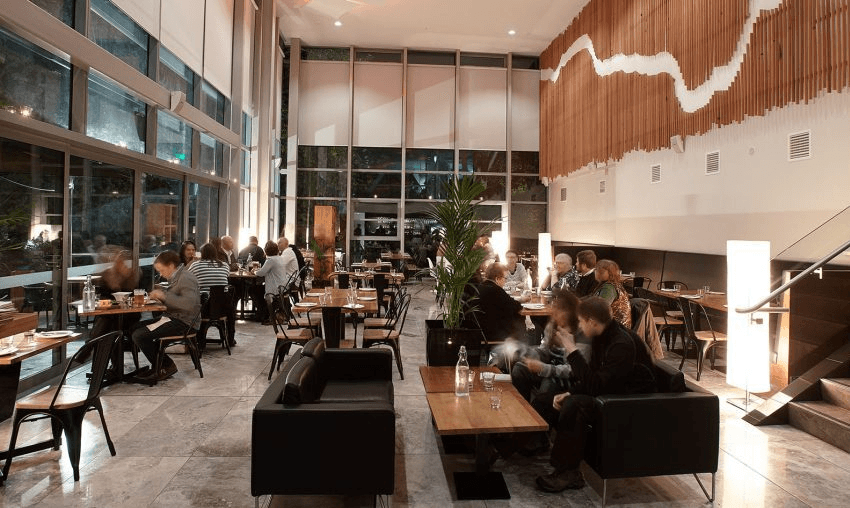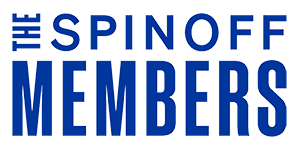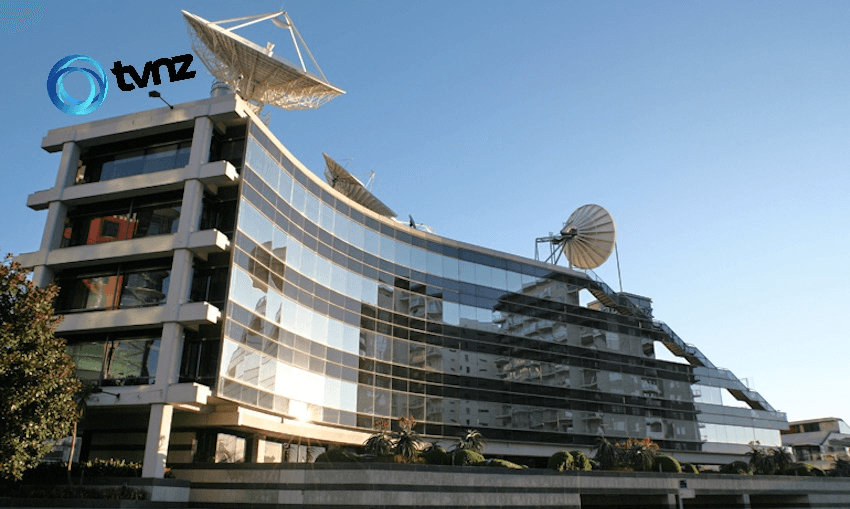In which Steve Braunias announces the resumption of New Zealand’s most famous free media lunch extravaganza on the banks of the Waikato River in Hamilton.
And on the fourth day Press Club rose again. A kind of resurrection story was played out just before Easter. On the Monday, some guy from Wintec phoned me and said the Wintec Press Club was no more, that funding had ceased, that it was dead, over, finis. As life president of the Wintec Press Club, I saw my life presidency flash before my eyes, and did what anyone in my shoes would do: I took to Twitter. I announced its passing. I thanked Wintec for its 15-year support of a unique media lunch extravaganza, held three times a year in Hamilton on behalf of the j-school students, with guest speakers and all sorts of well-known New Zealanders who travelled far and wide to eat a free lunch. I said it had a good run – I staged 21 lunches since 2010, when I was appointed editor in residence at Wintec – and it was fun while it lasted, and anyway, goodbye. By the Thursday, it was back on again.
To be precise: Wintec Press Club is dead, long live Hamilton Press Club. As soon as I tweeted the news on the Monday, a group of forward-thinking, can-do types leapt into action, made calls, arranged meetings, shook hands, and did something fast and good and amazing – the Hamilton Press Club was created, and the unique media lunch extravaganza lives again.
Wintec have rather looked a gift horse in the mouth. Its their loss. Press Club gave the j-school national recognition, and provided invaluable introductions for numerous students. But Hamilton knows its horses, and creative, innovative people – there is no shortage of these kinds of people in the Fountain City – stepped in to save the event. The prime mover and shaker of this little miracle is Hamilton legend Chamanthie Sinhalage, who now works in the office of Wellington mayor Justin Lester; and the hero of the hour is Brian Squair, managing director at Hamilton architecture firm Chow:Hill, who has committed to underwrite the expense.
I had a cup of tea with Brian last week. For a Scotsman, he was surprisingly easy to understand. I said, “Why are you doing this?”
He said, “It’s good for Hamilton. It’s great for Hamilton. Plus I want a free lunch.”
Fair enough. And so the first Hamilton Press Club of 2018, that is to say the first Hamilton Press Club ever, will be held at the awesome Gothenburg restaurant overlooking the Waikato River, on Friday, May 18, with guest speaker Alison Mau.
“I was delighted to hear this event had been saved, and now reborn as the Hamilton Press Club,” said Alison. “I feel honoured to be asked to speak at the relaunch event.
“I’ll be talking about why there’s a need for #metooNZ, the response we’ve had to the launch of the investigation, and the insights we’ve garnered from the hundreds of people who’ve got in touch with their stories.
“And so I’ll talk about just how bad it gets for survivors who do make a complaint. I’ll reveal the worst industries in New Zealand for sexual harassment. And I’ll ask, ‘What needs to happen next?'”
When I gave thought to asking who to speak at the inaugural Hamilton Press Club, Alison Mau was my first choice. As life president at the Wintec Press Club, I’d quite often engage speakers only after my first choices didn’t work out. Last year for instance I confidently rocked up to Toby Manhire on the campaign trail, asked if he would speak at the next Press Club, and in between eating free food and drinking free beer at a National Party event, he replied: “God, no.” So I asked Sean Plunket. Anyway it’s awesome that Alison has said yes. Her #metoo project with Stuff has the potential to achieve very good, very important journalism – and very good, very important journalism is at the heart of Hamilton Press Club.
Hamilton Press Club is also about Hamilton. Holding a Press Club in Auckland wouldn’t have the same sense of adventure, or fun. One of the stars these past years of the Wintec Press Club has been the Waikato River; the lunches were held at a venue on the banks, and the river flowed past, wide and deep and beautiful, mesmerising. Hamilton’s a cool place and many drinks have flowed after the Press Club events up at Little George, where the craft beer is so good that its pale amber tastes a bit like Lion Red.
The after-match drinks will continue. The free lunch will remain in place. The programme of three lunch events during the year has remained intact. The guest speakers will be of the same caliber as Wintec Press Club speakers such as Mihi Forbes, Patrick Gower, Paula Penfold, Jacinda thingamajig, the late Greg King, the late Paul Holmes, and, well, you know, actually she was certainly memorable, Rachel Glucina. The guest list will remain invite-only, and come in at about the same number of 100-120 people, and will continue to feature journalists, editors, TV showponies, entertainers, politicians, Dr Jarrod Gilbert, prominent Hamiltonians, j-school students from Wintec, and others who either practise journalism or are the subjects of journalism.
In other news, Chamanthie Sinhalage, who moved and shook to create Hamilton Press Club, is getting married next weekend in Sri Lanka. Her husband is Stuff journalist and Wintec j-school legend, Dileepa Fonseka. To the happy couple: the Hamilton Press Club wishes you an awesome wedding, and looks forward to your company on May 18. Let’s get this thing started.
This section is made possible by Simplicity, New Zealand’s fastest growing KiwiSaver scheme. As a nonprofit, Simplicity only charges members what it costs to invest their money. It already has more than 12,500 plus members who, together, are saving more than $3.8 million annually in fees. This year, New Zealanders will pay more than $525 million in KiwiSaver fees. Why pay more than you need to? It takes two minutes to switch. Grab your IRD # and driver’s licence. It really is that simple.





